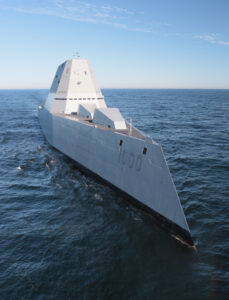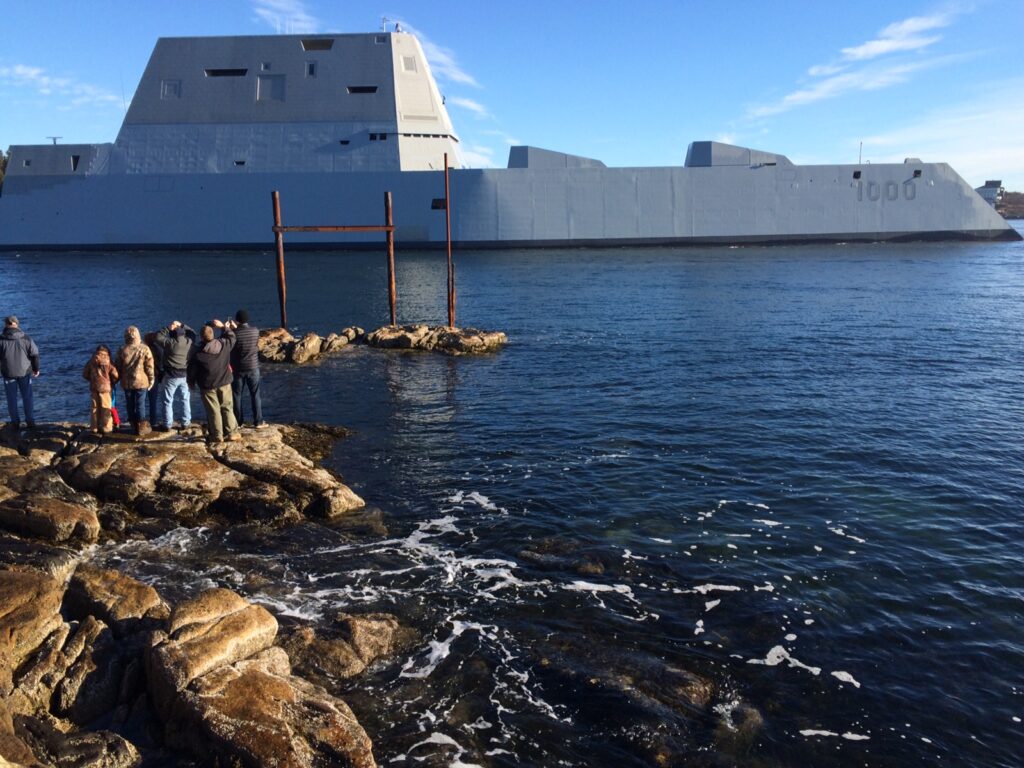The DDG-1000, aka Zumwalt, is the snazziest ship in the Navy. It’s also something of a dead end.
After years of research, development, construction, cancellations, and cuts, the first ship of a new class of high-tech destroyers is now “conducting at-sea tests and trials,” the US Navy announced today. (The video and photos were taken yesterday).
It’s a major milestone for a troubled program. The Navy originally intended to buy enough DDG-1000s to replace its workhorse DDG-51 Arleigh Burke class. Now it’s only buying three — and there’s serious discussion of cancelling the third. The Navy actually went so far as to reopen the production line for the Arleigh Burkes and restart that smaller, cheaper, and arguably more versatile class.
The DDG-1000 was conceived in the Clinton era, when naval superiority could be assumed, as a platform to project power ashore with long-range gunfire. The DDG-51, with its built-in Aegis missile and air defense system, was built to contest the seas against the Soviet navy — making it more applicable to a rising China.
The Zumwalt does boast major innovations, however, which could end up on future classes, even if the DDG-1000 class itself stops at two or three ships. Most visually striking is its “stealth” hull. Most fiscally appealing is the use of automation to allow a much smaller crew, less than half the DDG-51’s for a ship 63 percent larger. (Similar manpower-reduction principles are at work on the controversial Littoral Combat Ship, but LCS sailors may be run ragged as a result).
Most important, though, is the DDG-1000’s electric drive. It still uses gas turbines to generate the power in the first place, but it dispenses with bulky, unreliable shafts to convey that power to the propellers. What’s more, the ship’s integrated power system allows the energy to be shifted to other systems besides propulsion, rather like the USS Enterprise on Star Trek. The ship can sail along at a brisk 20 knots and still have 58 megawatts to spare — more than six times the 9MW available on an Arleigh Burke.
What to do with all this energy? Radars and other sensors are the power-hungry systems of today. But the most exciting possibilities are weapons now in advanced testing such as lasers and rail guns, weapons which could change the balance of power between US warships and incoming missiles.

USS Zumwalt heads down the Kennebec River and out to sea for the first time on Dec. 7, 2015.
Major trends and takeaways from the Defense Department’s Unfunded Priority Lists
Mark Cancian and Chris Park of CSIS break down what is in this year’s unfunded priority lists and what they say about the state of the US military.


























